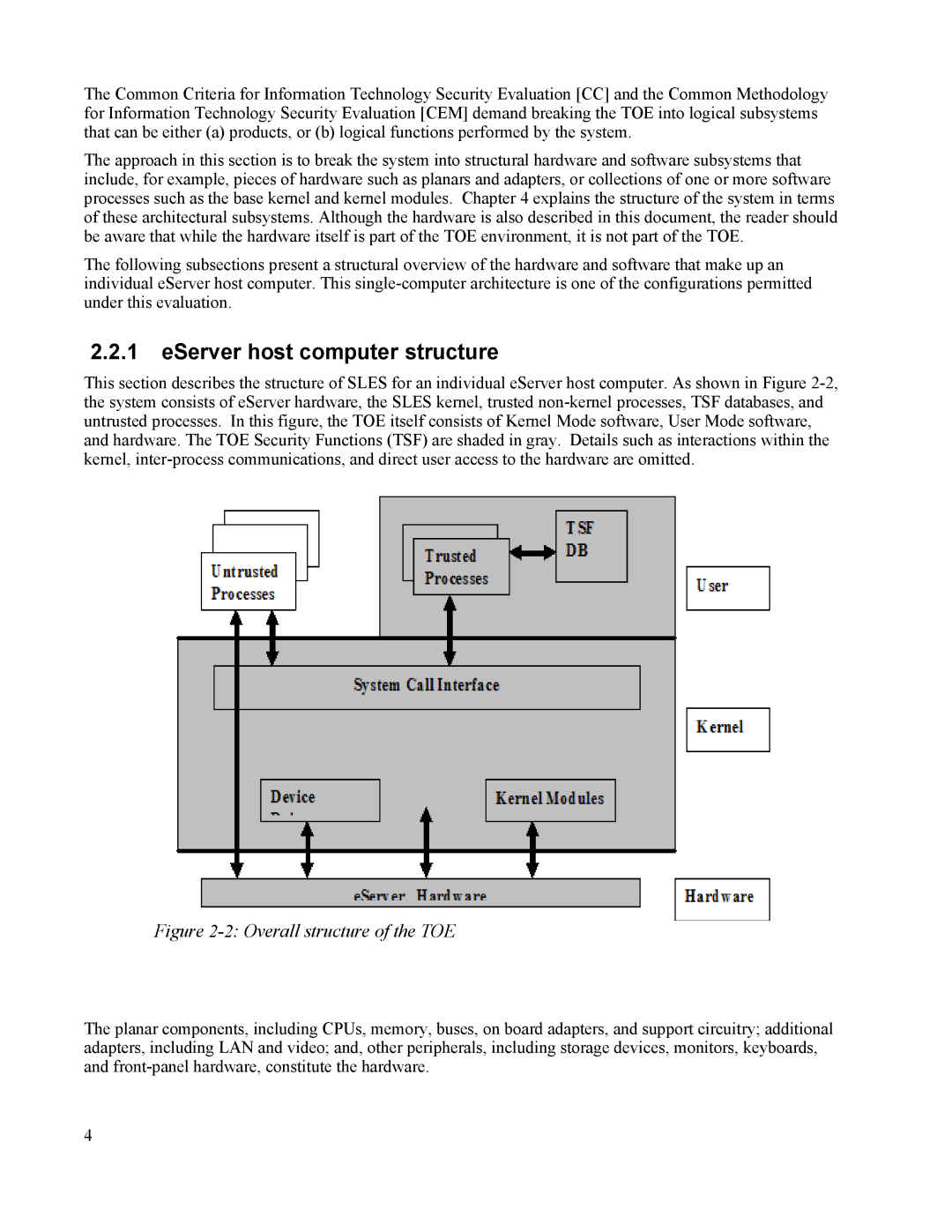
The Common Criteria for Information Technology Security Evaluation [CC] and the Common Methodology for Information Technology Security Evaluation [CEM] demand breaking the TOE into logical subsystems that can be either (a) products, or (b) logical functions performed by the system.
The approach in this section is to break the system into structural hardware and software subsystems that include, for example, pieces of hardware such as planars and adapters, or collections of one or more software processes such as the base kernel and kernel modules. Chapter 4 explains the structure of the system in terms of these architectural subsystems. Although the hardware is also described in this document, the reader should be aware that while the hardware itself is part of the TOE environment, it is not part of the TOE.
The following subsections present a structural overview of the hardware and software that make up an individual eServer host computer. This
2.2.1eServer host computer structure
This section describes the structure of SLES for an individual eServer host computer. As shown in Figure
Figure 2-2: Overall structure of the TOE
The planar components, including CPUs, memory, buses, on board adapters, and support circuitry; additional adapters, including LAN and video; and, other peripherals, including storage devices, monitors, keyboards, and
4
